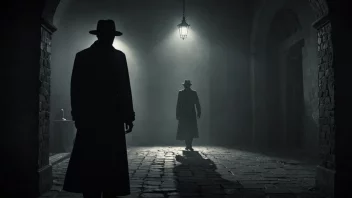The unreliable narrator is a fascinating literary device that challenges readers to question the truth behind the narrative. This technique has been employed by various authors throughout literary history, offering a unique lens through which to analyze stories and characters. In this article, we will explore the art of the unreliable narrator through a comparison of two classic novels: Jane Eyre by Charlotte Brontë and The Catcher in the Rye by J.D. Salinger. Both novels utilize unreliable narration to create complex characters and to engage readers in a deeper understanding of their themes.
Understanding Unreliable Narrators
An unreliable narrator is a storyteller whose credibility is compromised. This can arise from their limited perspective, personal biases, or intentional deceit. The use of unreliable narrators can add layers of complexity to a narrative, prompting readers to actively engage with the text and consider multiple interpretations.
Jane Eyre: The Complexities of Self-Perception
Jane Eyre presents its protagonist, Jane, as an unreliable narrator through the lens of her emotional experiences and societal context. As a woman in 19th century England, Jane faces numerous challenges that shape her worldview and narratorial reliability.
Pros of Jane's Unreliability
- Emotional Depth: Jane's subjective experiences provide readers with a deep emotional connection to her struggles, making her journey relatable.
- Social Commentary: Jane’s perspective sheds light on issues of class, gender, and morality, encouraging readers to question the societal norms of her time.
- Character Development: As Jane matures throughout the story, her unreliable narration reflects her growth, leading to a more profound understanding of her character.
Cons of Jane's Unreliability
- Limited Perspective: Jane's personal biases may lead to a skewed interpretation of events and characters, leaving readers to navigate potential misconceptions.
- Reader Confusion: The complexity of her emotional state can sometimes lead to confusion regarding her reliability, making it challenging for readers to discern truth from perception.
The Catcher in the Rye: The Cynicism of Youth
In contrast, The Catcher in the Rye features Holden Caulfield, a teenage protagonist whose unreliable narration stems from his cynicism and mental struggles. His perspective is colored by his disdain for the adult world and a deep sense of alienation.
Pros of Holden's Unreliability
- Authenticity of Voice: Holden's colloquial language and stream-of-consciousness style create a genuine connection with readers, making his experiences more impactful.
- Exploration of Themes: His unreliable narration allows for an exploration of themes like alienation, identity, and the loss of innocence, resonating with many young adults.
- Engagement with Readers: Readers are compelled to question Holden's interpretations of events, fostering a more interactive reading experience.
Cons of Holden's Unreliability
- Frustration: Some readers may find Holden's constant negativity and circular reasoning frustrating, which could hinder their engagement with the story.
- Ambiguity: The ambiguity of his mental state can lead to misinterpretations, making it difficult for readers to grasp the true essence of his journey.
Comparative Analysis of Themes
While both novels utilize unreliable narrators, they explore different themes through their characters’ perspectives. Jane Eyre delves into issues of identity, gender roles, and social class, while The Catcher in the Rye focuses on themes of alienation, adolescence, and the struggle against societal expectations.
Character Journey
Jane's journey is one of self-discovery and empowerment, as she navigates a patriarchal society and ultimately asserts her independence. Conversely, Holden's journey is marked by his resistance to adulthood and his longing to protect innocence, which culminates in his emotional breakdown.
Reader Engagement and Interpretation
Both novels demand active engagement from readers. In Jane Eyre, readers must analyze Jane's growth and the reliability of her perspective, while in The Catcher in the Rye, they are invited to question Holden's views of the world and the authenticity of his experiences.
Conclusion
The art of the unreliable narrator serves as a powerful tool in literature, enriching the reading experience by inviting readers to explore complex themes and characters. Through the comparison of Jane Eyre and The Catcher in the Rye, we see how distinct approaches to unreliable narration can evoke different emotional responses and provoke thought. Ultimately, both novels highlight the importance of perspective in storytelling and remind us of the subjective nature of truth. Readers are encouraged to embrace the uncertainties presented by unreliable narrators, as they can lead to a deeper understanding of both the narrative and themselves.






